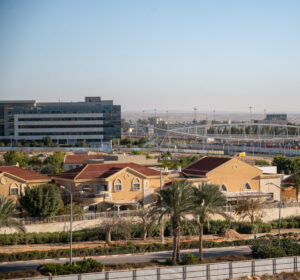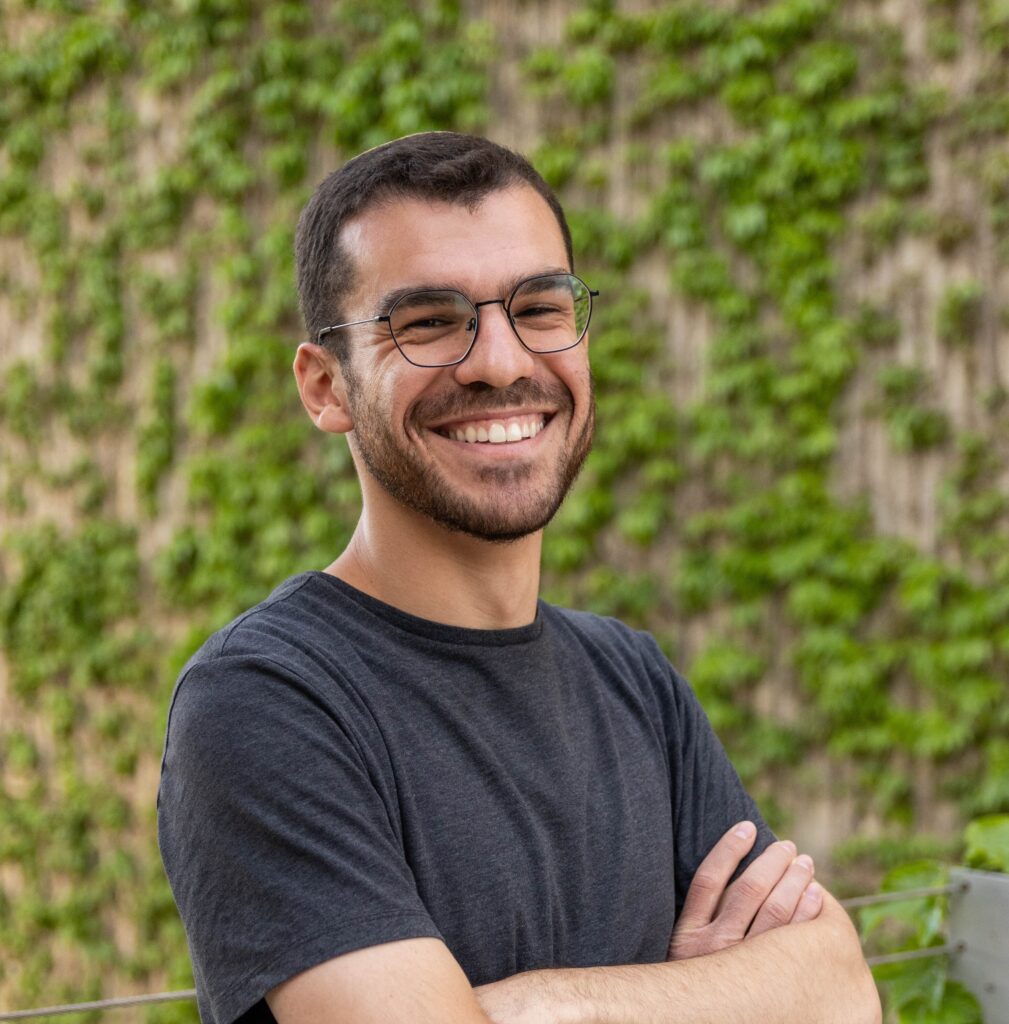
From Tech to IDF: Beer-Sheva’s ‘Golden Age’
From Tech to IDF: Beer-Sheva’s ‘Golden Age’
August 29, 2025
Negev Development & Community Programs

A view of the ATP and Double Helix Bridge (DNA Bridge) as seen from BGU’s North Campus in Beer-Sheva
Times of Israel—From the DNA Bridge in Beer-Sheva’s Gav Yam high-tech park, the future of this desert city looks wide open.
Established just 12 years ago in a city once better known for camels than for unicorns, the Gav Yam high-tech center is now a thriving hub of research and development for leading tech companies such as Microsoft, Dell, Wix, and Rafael Advanced Defense Systems. There are four buildings and some 3,000 employees, with construction on additional buildings that will more than triple those numbers in the coming years.
To the right, across the footbridge that is internationally acclaimed for its futuristic double helix design, is Ben-Gurion University of the Negev (BGU), with about 30,000 students. Slightly to the left of that is Soroka Medical Center, the primary hospital for the entire southern Negev region.
And to the left of that, you can see the location carrying the city’s big hopes for the future.
At the beginning of 2026, the IDF plans to begin moving most of its information and communication technology operations to its massive new 150,000 square meter (37-acre) technology campus in Beer-Sheva, just several kilometers past the tech hub.
Humble foundations
“I’m very excited about Beer-Sheva, but you shouldn’t expect it to be like Tel Aviv by tomorrow,” said Dan Blumberg, BGU’s vice president of industrial and regional development.
“Housing prices are much cheaper than in the center of the country, and there is a lot of construction. We have 3,000 engineers in a high-tech park that didn’t exist 12 years ago, and the new IDF center is going to create many new jobs. A lot of those employees are going to come and live here, but it’s going to take time. The mayor is working to push through several economic initiatives.”
National priorities
The government has ambitious plans to develop Beer-Sheva and solidify its status as the Negev’s economic anchor.
A five-year budget plan approved last year aims to consolidate Beer-Sheva’s growth with investment in critical infrastructure, housing, employment and economic development, while two significant projects could significantly fix the city’s transportation challenges in the long term.
Entrepreneurial Beginnings
Last year, a group of three young entrepreneurs set up a cafe at the foot of the hilltop of one of Beer-Sheva’s most scenic lookout points.
“We recognized that this spot had tremendous potential, and with the municipality’s help, we built a communal space where people come for concerts, yoga classes, and other events,” Eyal Shoshan, one of the founders of Hadabeshet, told The Times of Israel over coffee. “We have collaborations with the university (BGU) and many entrepreneurs, and now, the place is often full, and the atmosphere at the monument has changed for the better.”
Beer-Sheva high-tech accelerator head Dai said this sort of growth in Beer-Sheva is essential not just to the city but to the entire Negev region.
“What we do here affects all of the satellite settlements around us,” he said. “Strengthening high-tech in Beer-Sheva strengthens high-tech in Ofakim, Sderot, Omer and other nearby towns, while investing in other cities at our expense cannibalizes the long-term growth of the region. If we are the capital of the Negev, then it follows that when we are successful and significant, everyone else benefits as well.”



